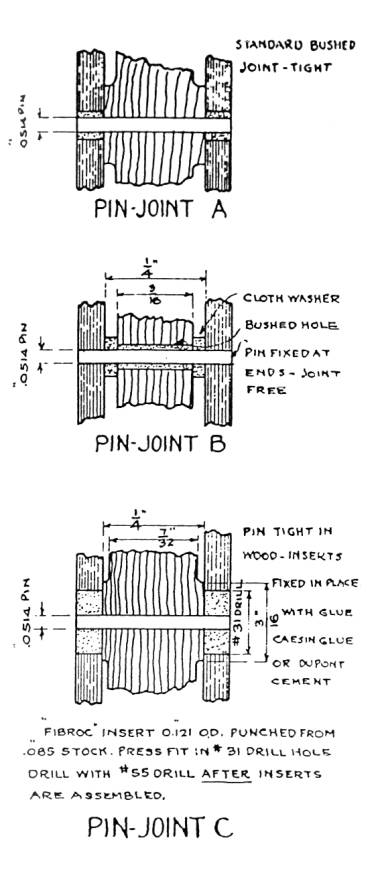| You Are Not Logged In | Login/Get New Account |
|
Please Log In. Accounts are free!
Logged In users are granted additional features including a more current version of the Archives and a simplified process for submitting articles. |
|
MMD
 Tech
Tech
 HickmanAction
HickmanAction
 pinjoint
pinjoint
|
|
from Nelson Barden's 1969 interview with Dr. Hickman Also reproduced in book "The Ampico Reproducing Piano" ed. by Richard J. Howe, publ. by MBSI 1987, page 92.
B: Now on to this [machine] which was apparently to measure the actual key touch. H: Yes. I can show actual records that were made with that. Do you want to look at that part now? B: Sure. H: This is one thing I don't lend out because it is the only one I've got left. You see this was done for the purpose of showing the tremendous amount of friction in any standard action. Now this is the action which I designed. B: Yes, that's exactly the same as on the patent.
B: What's the principle of this? H: It's mechanical all the way through. B: You mean the machine did the measuring? H: Well, I wish I could remember. I don't know whether I could explain it to you or not. B: Did the paper move this way? H: The paper didn't move at all. B: Okay. You were correlating then, the force necessary over the movement of the key? H: That's right. I think I had a crank on there that I just cranked this around and put it through its cycle. Now of course, if you had a dynamic blow, those frictions would change. But for the slow motion, those frictions were really tremendous. One time I had a raft of these showing a piano action being subjected to a lot of humidity. And as you well know, the hammer wouldn't even come back down again.
15 February 2002 |
|
|
|
|
|
|
|
|
|
CONTACT FORM: Click HERE to write to the editor, or to post a message about Mechanical Musical Instruments to the MMD Unless otherwise noted, all opinions are those of the individual authors and may not represent those of the editors. Compilation copyright 1995-2026 by Jody Kravitz. Please read our Republication Policy before copying information from or creating links to this web site. Click HERE to contact the webmaster regarding problems with the website. |
|
|
||||||
|
 [ Nelson Barden and Clarence Hickman discuss the key force measuring instrument
and the force recordings it produced. ]
[ Nelson Barden and Clarence Hickman discuss the key force measuring instrument
and the force recordings it produced. ]
 H:
Yes. And this is the other one. Vast difference in them. Now then here's
the pin joints. I could do a very much better job now than I did then.
These are inserts of graphite impregnated phenol fiber. And in order to
get them just the right size to fit this pin, we used a carballoy reaming
tool to ream it out. But we found that you didn't dare make them too tight.
But if you had any play at all, the rattle could be heard by the ear. And
what we should have done was to then pull that piece of felt around this
member here and then we would have just gotten rid of that altogether.
Now this is one note on the piano using a regular action. As it comes back
around, the area in between these two lines represents the loss due to
friction. This is the new action for the same note. It's even more pronounced
when you go to a bass note.
H:
Yes. And this is the other one. Vast difference in them. Now then here's
the pin joints. I could do a very much better job now than I did then.
These are inserts of graphite impregnated phenol fiber. And in order to
get them just the right size to fit this pin, we used a carballoy reaming
tool to ream it out. But we found that you didn't dare make them too tight.
But if you had any play at all, the rattle could be heard by the ear. And
what we should have done was to then pull that piece of felt around this
member here and then we would have just gotten rid of that altogether.
Now this is one note on the piano using a regular action. As it comes back
around, the area in between these two lines represents the loss due to
friction. This is the new action for the same note. It's even more pronounced
when you go to a bass note.